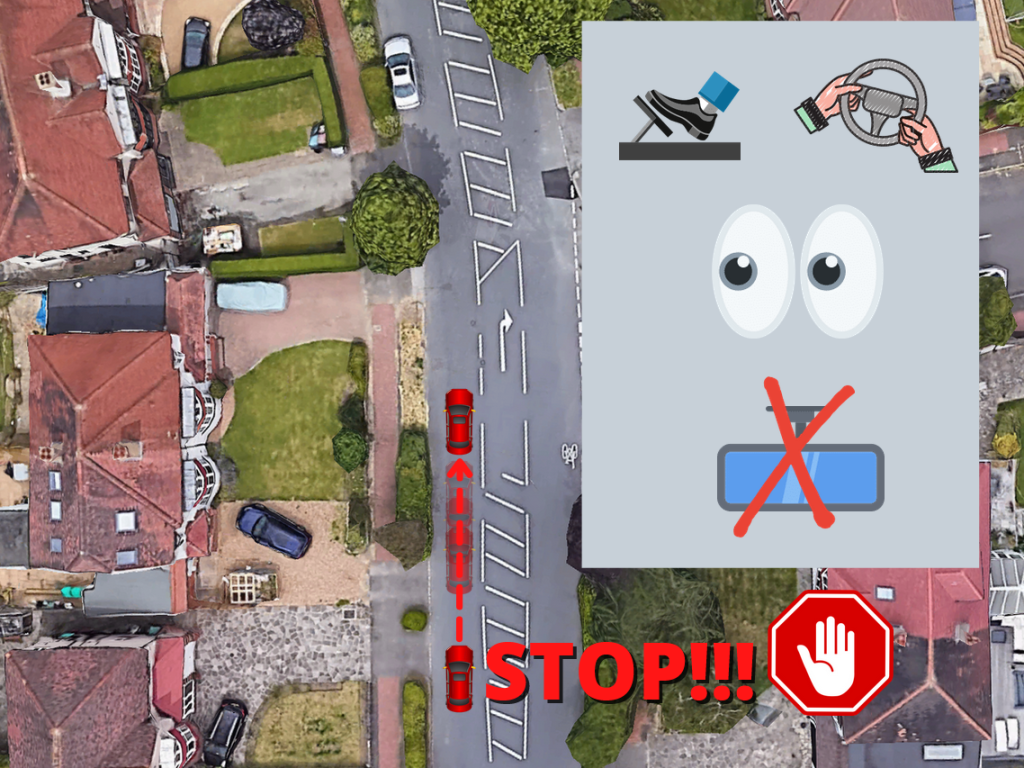The Emergency Stop manoeuvre is an exercise that you may be asked to perform on your driving test. However, it is important to know how to perform the emergency stop just in case it is required in the real world of driving.
What will be required for the emergency stop?
 On your driving test, you will be told in advance before being asked to stop in an emergency. You won’t be taken by surprise as that wouldn’t really be safe.
On your driving test, you will be told in advance before being asked to stop in an emergency. You won’t be taken by surprise as that wouldn’t really be safe.
You will be taken to an appropriate area, generally, a quiet place and be asked to pull over on the left.
Your driving examiner will then explain that they would like you to perform an emergency stop manoeuvre.
When they as you to ‘STOP’, you will be required to stop the car as quickly as you can, and as under control as possible. Your examiner will check around and make sure it’s safe before asking you to stop.
You will be asked to drive normally, the examiner will not want you to drive slowly in anticipation of the emergency. You will be required to drive in a normal fashion.
How to perform the emergency stop
 When you are ready, you will take off as normal and drive like you normally would. The examiner will check over their shoulder and if safe, they will turn back around and tell you to STOP.
When you are ready, you will take off as normal and drive like you normally would. The examiner will check over their shoulder and if safe, they will turn back around and tell you to STOP.
At this point, you will want to brake quickly, firmly and progressively (no easing up at the end). You will not want to slam the brakes on as this could cause skidding.
If you do end up in a skid, you will need to steer into the skid in order to bring the car back under control.
Keep both hands on the steering wheel to help keep control of the car.
Keep your eyes on the road (no checking of mirrors, we don’t have time for this in an emergency), we will want our eyes on the actual emergency.
Stopping distances for the emergency stop
![]() The amount of time it takes to stop the car in an emergency can be determined by many factors. But as a basic rule, the faster you drive, the longer it takes to stop.
The amount of time it takes to stop the car in an emergency can be determined by many factors. But as a basic rule, the faster you drive, the longer it takes to stop.
As you can see, the amount of time it takes to stop at 20 mph 12 metres, 6 metres of which are taken up by your thinking distance.
This is the amount of time it will take to think about breaking and actually proceed to stop the car.
Other factors that can effect stopping distances are;
- Weather conditions
- Conditions of your car
- Condition of the road surface
- Tiredness
to name but a few factors.
 If you would like to learn more about the Emergency Stop or any other subject around driving lessons or the driving test, check out our Online Driving Lessons here.
If you would like to learn more about the Emergency Stop or any other subject around driving lessons or the driving test, check out our Online Driving Lessons here.
You will find a vast array of driving lesson subjects that are extremely detailed and you won’t find them anywhere else including the
Parallel parking manouevre
Bay parking
Roundabouts and much, much more.
